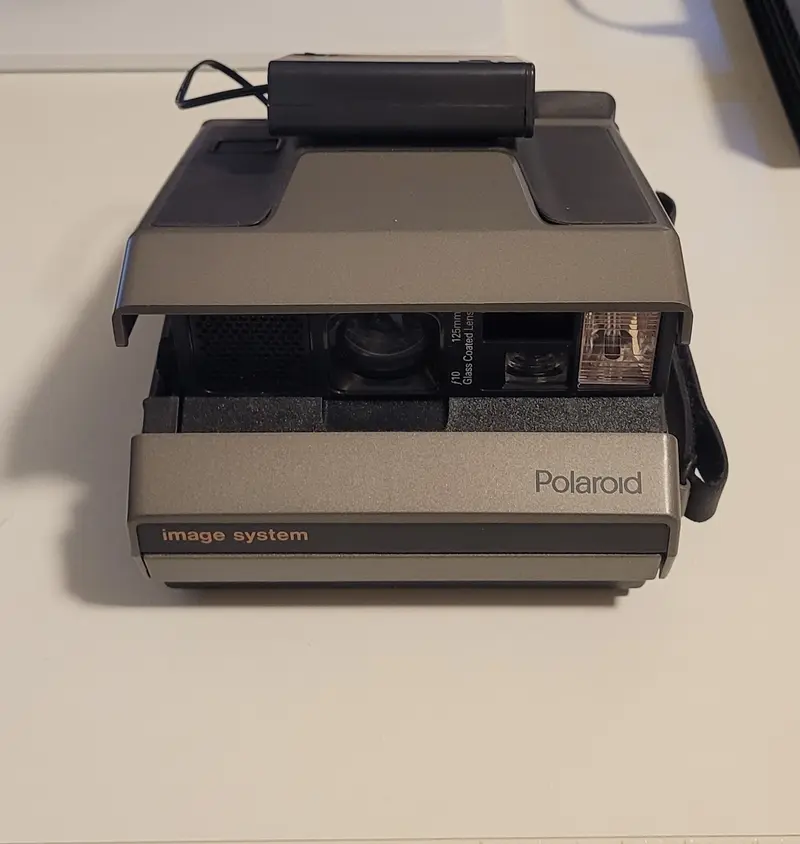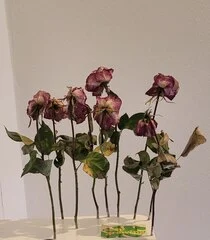My name is Farhad Sabrian. Currently, I'm pursuing computer science at FU Berlin, though my academic journey began with a bachelor's degree in electrical engineering. My interests lie in literature, philosophy, and politics. I have a fondness for spending time in cafes, engaging in chess matches with friends or even strangers. When it comes to lake swims, especially in the summer, it's an invitation I simply can't decline.
Vintage Polaroid Cameras
I had a hard time in the past two months, and I tried to prevail out of the continuing chest-muscle-contracting grief by drowing myself in a new hobby, analog cameras. I wasn't that much aware of such magical mechanical devices until a friend gifted me a onetime use camera. That camera piqued my interest in analog photography, however in hindsight, it seemed it was an abolute mechanical trash waste, as in I could only take 24 photos with it, and although the camera could have definitely continued working with a fresh new film canister, I had to irreversibly dismantle it to get the canister out. It was then when I realized I want to invest in an analog camera, so I started looking into it. A standard 35mm film canister has a fairly limited number of frames. This restriction has a silver lining. Despite not having a lot of space for making mistakes, this very restriction pushes me only to be more sharp when capturing slippery moments not letting them easily wriggle out of my hands. So after much deliberation, I decided to go with a Canon T70. I would share a list of hand-picked photoes in another post later.
| Polaroid Image System |
Instant cameras also fit in the same category of marvelous engineering. I found two cheap old spectra system polaroid cameras online, and proceeded to collect them both, a Polaroid Image 2 and a Polaroid Image System. They not only look stylish but also feel premium. The former only lets you switch between 3 different exposure levels, but the Polaroid Image System, as shown above, offers much more functionalities - for more details refer to manual. It even has a built-in sonar autofocus system that indicates how far the object in focus is. Since the production of spectra films ceased in 2019, I moded my polaroid to accept the newer films such as 600 and i-type. Since the original films included a battery inside, with a lot of difficulty, I had to provide a source of power supply externally - 4 conventional 1.5v batteries. The 600 films include a battery inside them that matches the specs of the spectra system cameras, but it doesn't seem sane to me to drop extra argent for the included battery when I can use the cheap 1.5v batteries to finish off 10 packs of i-type films. Since the size of the available instant films do not match the dimensions of the original films, there are some visible artifacts in the image rolling out of the camera. More specifically, the articats mostly are attributed to nonuniform pressure exerted by rollers inside the camera rolling out the film. This nonuniform pressure can be mittigated by trial and error for the i-type, and 600 films. But for me the artifacts are acceptible and add a magical twist to them.
 |
| Polaroid Image System |
I will put the url to the video I followed to open up the camera to access the internals and connect the batteries to the power supply circuitry. Video Link
What old pictures have to say?
From sometimes ago, actually since I finished my bachelor, I actively have been looking for relatable subjects that involve creation/innovation. I'm sure there was a point in my life that I had a switch flicked in my head making me realize how much it is facinating when a piece of art, music or even an engineered piece of work is created. Throughout my bachelor study I figured, the purpose of engineering is not only utilizing mathematics/physics and different materials to come up with realistic approaches for a problem at an optimal cost. The ethics behind the proposed solutions also plays a major role for them to be considered. An extreme case that shows the importance of the ethics in engineering is the situation of jewish people before and during the rise of nazi party. As nazi propaganda was being implemented, they tired to take the narrative in their hands to distort the history and culture of jewish people to deceive the mass to support their ethnic cleansing plans. During their rule, professional photographers were using cutting-edge equipments to make pictures with the purpose of dehumanizing jewish people. There were a handful number of companies that made a name from others misery just pushing for more profit. Imagine a collective resistance from the engineering communities with the aim to at least delay the development in the camera industry or any other industries. This resistance could have scathed the body of the propaganda machinery leading to more people being saved from the engineering-backed attrocities. It was in this period when courageous photographers such as Henryk Ross made a wager on their life with their thirst to reveal the truth by secretly taking pictures of the jewish people and documenting the harsh realities and everyday life of them. Since these pictures were taken covertly, their quality and light contrast were not assessed before taking them.
Image contrast enhancement is a field of study in image processing with the purpose of enhancing quality. The objective is to make the important information, that already exist in the image, more prominent. Usually this transformation makes the picture look more appealing as the quality and the contrast of the image are improved. There is a lengthy list of methods to enhance the quality/contrast of images, and day by day new methods are added to the list. I have implemented some methods and put them on my Github page. A list of methods I have implemented is:
- Two-dimensional histogram equalization and contrast enhancement
- Histogram-Based Locality-Preserving Contrast Enhancement
- Fast Image/Video Contrast Enhancement Based on Weighted Thresholded Histogram Equalization
| Original picture | Enhanced picture |
The original picture shown above is taken from the internet and is not necessary related to the example given in the text. Original photo by Annie Spratt
Make your voice heard!
It has been a while that I am spending my time on computers and although it had it's ups and downs, over all, I am satisfied with the relation I have nurtured between my fingers and the computer screen. It has been a tremendously liberating experience working with computers and telling them what to do. To be honest there have been many cases that I found myself talking to my laptop elaborating what I want it to do to only find my fingers later typing and translating what I said into the computer language. Of course there are times that what is inside cannot be translated, so eventhough the laptop cannot react, still the laptop with its fan off just sits there calmly and listens. It was one of these times that a spark in my mind inflamed. From the chronical context of that period, I should say for me and many others, it was a time of anguish and rage. Around that time Mahsa Amini was killed and many were protesting all around the corner in Berlin. The sorrow of the murder was like a quiver stuck in my heart for the longest time. After a little bit of meditation over the eagle view of the problem, I realized being quiet is not an option. So I started letting my fingers go.
Throughout the time I was participating in protests, I figured, there is no platform out there that facilitates access to the registered protests on Berlin.de. This was the aim of my code development. After a long time of development, I was able to successfully deploy a telegram bot that is at command on the finger's hit and has a lot of potential in utilizing the information provided on Berlin.de. To let the code talk for itself, I will not dive more into it and will just provide a link and a picture of the telegram bot, @ProtestsBerlinBot.
Boredom activity: gravity defying flowers
Yesterday, I was routinely cleaning my room. At some point, I realized that the flowers in a jar on my table, with their heads drooping downwards, were completely dried. Since the drying has made the flowers light in weight, I figured, for each one I can use a small magnet to sustain its weight in any direction.
The flower heads appear to droop upwards in the set up scene. They are pointing up in defiance with the gravity pulling them down. Some of the flowers support the weight of others. The second picture, captured from below, gives the impression of the flowers standing upright. They touch the surface at a slim contact point. The narrow touchpoint and the delicate bulky flower heads rooting against gravity convey a combined contrasted expression of fragility, unreliability, commitment, and eagerness.
Why am I here?
This is a simple webpage that I created and I'll gradually update. Generally I will write my intresting thoughts, anything that piques my curiosity and maybe even my elaborations on my experiences in particular conditions.





